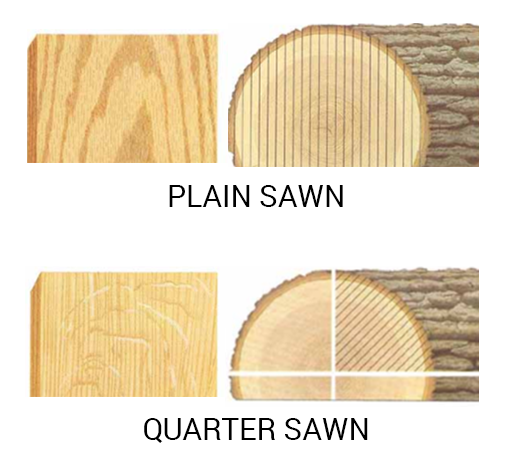Most lumber cut for commercial purposes are standard plainsawn boards. Different ways to orient a log with respect to the saw blade highlight the elegant grains of many woods. Different terminology exists between cuts for hardwood and softwood lumber and this parallel set of terms can be a little confusing.
Generally, in commercial practice, lumber with rings at angles of 0° to 45° to the wide surface is called plainsawn. Quartersawn lumber has rings at angles of 45° to 90° to the wide surface of a board.

Some advantages of plainsawn lumber:
- Shrinks and swells less in thickness
- Surface appearance less affected by round or oval knots compared to effect of spike knots in quartersawn boards; boards with round or oval knots not as weak as boards with spike knots
- Shakes and pitch pockets, when present, extend through fewer boards
- Figure patterns resulting from annual rings and some other types of figure brought out more conspicuously
- Is less susceptible to collapse in drying
- Costs less because it is easy to obtain
Some advantages of quartersawn lumber:
- Shrinks and swells less in width
- Cups, surface-checks, and splits less in seasoning and in use
- Raised grain caused by separation in annual rings does not become as pronounced
- Figure patterns resulting from pronounced rays, interlocked grain, and wavy grain are brought out more conspicuously
- Does not allow liquids to pass through readily in some species
- Holds paint better in some species
- Sapwood appears in boards at edges and its width is limited by the width of the log
